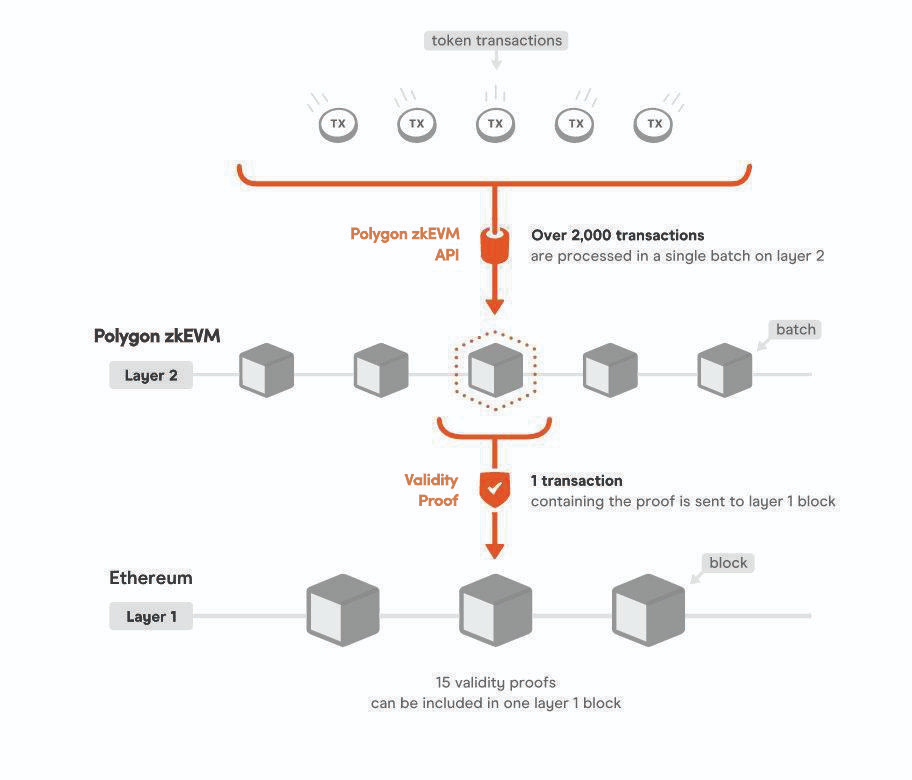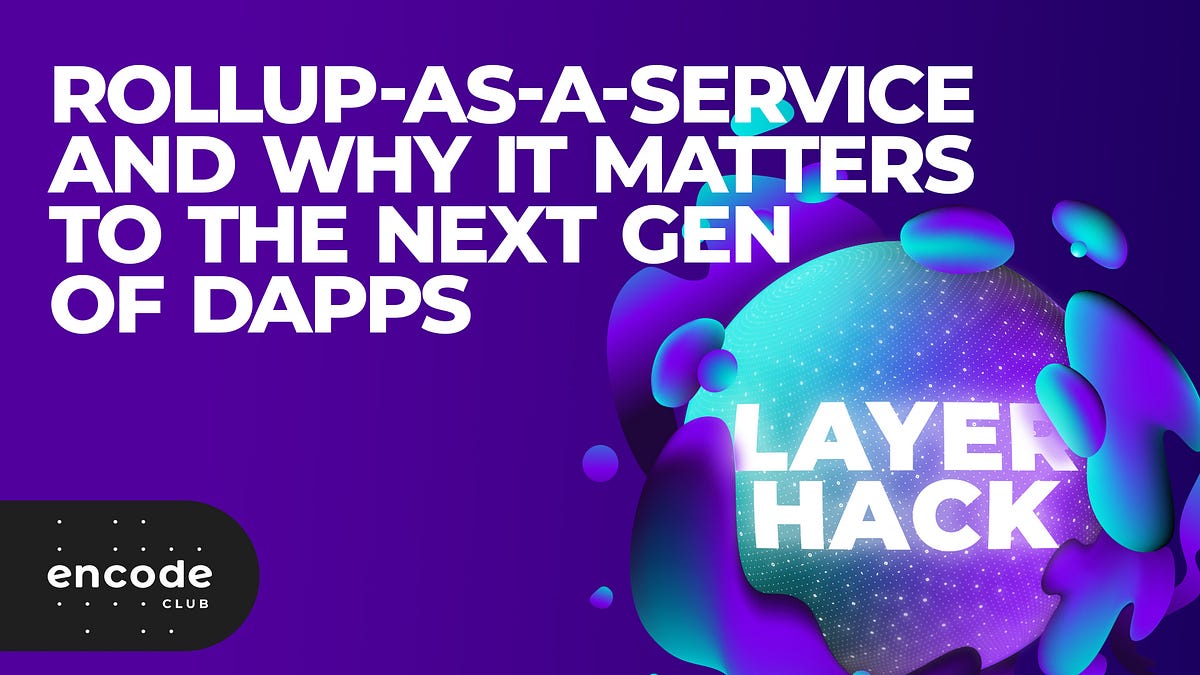What is Rollup as a Service? Rollup as a Service, abbreviated as RaaS, is a product that helps individuals and organizations easily build their own Layer 2 platform. So no matter how big the potential of this market is, everyone should follow me in the article below.
To better understand Rollup as a Service, people can refer to some of the articles below:
- What is Argus? Argus Cryptocurrency Overview
- What is Sovereign? Sovereign Cryptocurrency Overview
- What is Caldera? Caldera Cryptocurrency Overview
What is Rollup as a Service (RaaS)?
Background of Rollup as a Service
In the past when Ethereum encountered scaling problems, especially after the Crypto Kitties boom, there were solutions proposed to solve these problems including:
- Build Layer 1 based on more advanced technologies and develop vertically.
- Build Layer 2 with the majority of workload being executed off-chain. Some Layer 2 solutions such as Plasma, State Channel, Validium, Rollup (Optimistic Rollup & zkRollup),…
- Building a new concept is the Internet of Blockchain with initial representative projects such as Polkadot, Cosmos and Avalanche.
It can be seen that at the present time, solutions, especially Rollup, are proving their strength when TVL and users on Arbitrum, Optimism or zkSync are much higher than many Layer 1s that once dominated the market. such as Solana, Polygon, Fantom,… Besides, projects in the Internet of Blockchain segment are facing problems in developing their ecosystems.
Some of the problems encountered when building Layer 1 Blockchains on Layer 0 platforms include:
- Layer 1s must deploy their own Validator, which is time-consuming and costly in the early stages of a very weak and vulnerable network.
- Layer 1 operates asynchronously, leading to many difficulties in interacting with each other.
And that is the driving force for projects in the RaaS segment to officially be born.
Rollup overview

To understand RaaS, we first need to understand what Rollup is? Rollup is a Layer 2 solution that takes calculations outside the Blockchain to reduce pressure on the network, thereby improving the scalability of the network. To put it simply, Roll collects many things into one and Up is posted to Layer 1. Rollup has the following mechanism of action.
- Step 1: Transactions will be sent to mempool. Here, Sequencers will arrange valid transactions into 1 Block.
- Step 2: After Block has enough transactions, it will be sent to Prover who is responsible for creating transaction proof for that block and sending it back to Sequencer.
- Step 3: Sequencer will send both Block and Transaction Proof (if Optimistic Rollup will be Fraud Proof and Validity Proof for zkRollup) below Layer 1.
- Step 4: At Layer 1, Validators to authenticate transaction evidence. If the proof is valid then that Block will be added on the Main Chain.
Overview of Rollup as a Service

It can be said that Rollup as a Service (RaaS) is a harmonious combination between the best of Rollup technology and the operating model of the Internet of Blockchain. It can be seen that Rollup as a Service is orienting and solving the problem of horizontal expansion of Blockchains. Simply put, the model being targeted is Modular Blockchain.
The core of Modular Blockchain is to separate the processes surrounding a transaction including Execution, Settlement and Data Availability. These processes will be separated and processed in different places, making the nodes lighter, thereby improving the scalability and decentralization of the network.
With RaaS, everyone from individuals, to teams or organizations can build and deploy their own Layer 2 with many options to suit their wishes such as:
- Optional Settlement class or Data Availability class. This means you can choose consensus in Ethereum but will store data in Celestia to minimize transaction fees.
- Options for virtual machines can be EVM or SolanaVM or even MoveVM.
- Fee Payment options: You can choose native token or Layer 1 token to pay transaction fees on the network.
- Optional block completion time for scalability or security.
Besides, there are many other options as long as developers can build the platform they desire. Some of the clear advantages that RaaS brings to the crypto market include:
- Platforms save a lot of costs when first deployed because Settlement and Data Availability are all hired from outside.
- RaaS-oriented platforms all have a framework that helps developers easily deploy an appchain, even a Layer 2 one, which does not require developers to have cryptographic knowledge while they are working. jobs on zkRollup.
- Huge customization capabilities make it possible to meet all the needs of developers, giving them freedom to create without constraints.
- Don’t worry about security or decentralization if they choose reputable Layer 1 as the Settlement and Data Availability layer such as Ethereum, Egien Layer,…
- Solve the expansion problem of the Smartcontract Platform market effectively and sustainably.
Some potential projects in the Rollup as a Service segment
Although it is a fairly new concept in the crypto market, the number of projects in this segment is expanding every day. Some outstanding projects include:
- Sovereign: Sovereign sets out a vision for itself that is to build a vision Internet of Rollups alternative to the Internet of Blockchain to solve security-related problems. The project’s first successful $7.4M fundraising was led by Haun Ventures.
- Argus: Argus aims to build an SDK framework called World Engine so that developers can build their own blockchain for their Web3 games. The project successfully raised $10M in funding led by Haun Ventures
- Caldera: Caldera is an application specializing in building Layer 2 for various individuals and organizations. The project successfully raised $9M led by Sequioa and Dragonfly Capital with participation from Neo, 1KX and Ethereal Ventures.
Some Applications of Rollup as a Service
Sector – specific Chains
The concept of Sector – specific Chain refers to Blockchains that specialize in a certain area. This is not a strange concept as we previously had some prominent names such as:
- Flow: Blockchain focuses on NFTs & Gaming.
- DeSo: Blockchain focuses on DeSocial.
- dYdX: Platform focusing on Trading segment.
However, Flow or DeSo itself still has problems with expansion or many other problems. Rollup Chains can then customize themselves to become suitable for a certain industry, be it AMM, Lending & Borrowing, Margin Trading, Liquid Staking, NFT, Gaming,… Because each segment will have its requirements. Different like DeFi prioritizing security while NFT, Gaming or Trading prioritize scalability, so customization helps developers balance the factors.
Typically, Sector – specific Chain will be more suitable for developing an Appchain than a Blockchain.
Nomarl Blockchain
Rollup Chains can completely aim for a common purpose: anyone, any project, any segment can build on it. That is the story of Arbitrum or Optimism at the present time. Whether DeFi, NFT, Gaming or Social can be built normally. However, with the current context, most projects will develop in the appchain direction that I presented above.
With this direction, developers must balance all three factors including Scalability, Security and Decentralization to make their platform suitable for the masses.
The Future of Rollup as a Service
Clearly, RaaS opens up a new horizon for developers inside and outside the crypto market. Anyone, anywhere can easily build their own Appchain or Blockchain quickly without having to have too much knowledge about it. However, RaaS is still in the early stages of development so we still need a lot of time to observe and monitor.
Hopefully through this article, people can understand more about what Rollup as a Service is?


